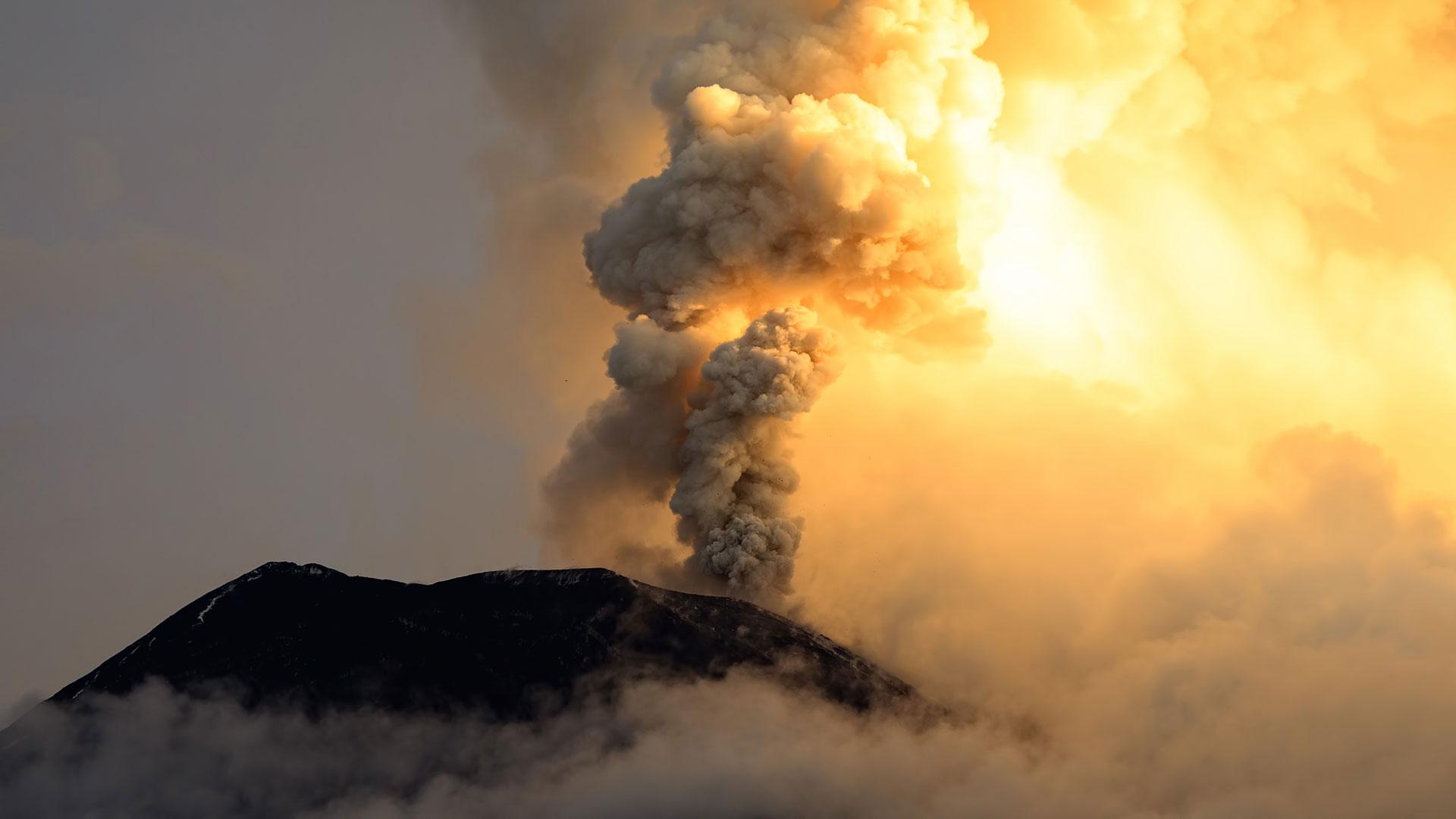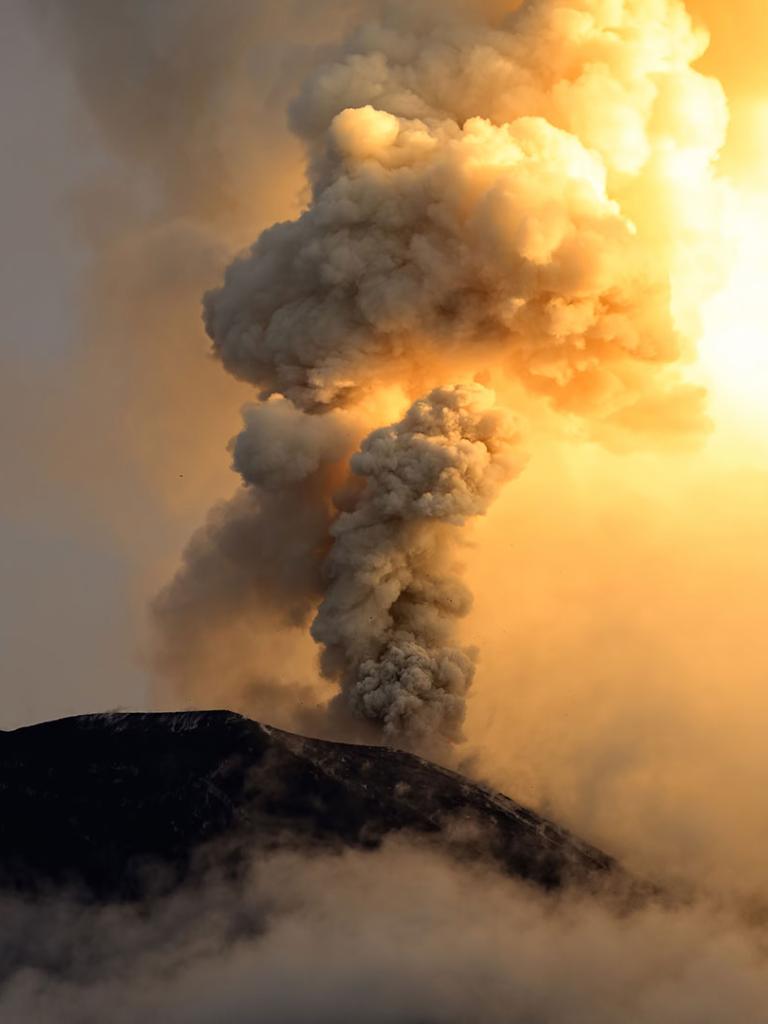28 March 2023
21 November 2018
The first WMO Inter-comparison of Satellite-based Volcanic Ash Retrieval Algorithms in support of SCOPE – Nowcasting (hereafter called SCOPE-Ash) was motivated by the need to identify volcanic ash retrieval concepts with a long-term stable status beyond individual satellite missions, which could be generated operationally in a routine manner, and which included provision for smooth transition between different satellite sources to minimise the impact on users’ processing and forecast systems.
The participants in the initial pilot project identified the need for an inter-comparison activity between different volcanic ash product providers and researchers, to define the spread in the product parameters (e.g. mass loading, height, detection), and to compare the individual results with other validation data (e.g. aircraft measurements, ground or space-borne lidar).
EUMETSAT is a partner in the WMO SCOPE-Nowcasting activity and provided support for the initial inter-comparison via a study in which the analysis, which formed the basis for the final report and workshop, was performed.
At the conclusion of the initial activity a number of open points and recommendations for further work remained. As a result a follow-on inter-comparison activity has been planned. This study will provide the tools and analysis to support this follow-on activity building on the analysis performed for the initial inter-comparison.
Objectives
The objectives of the original WMO Inter-comparison of Satellite-based Volcanic Ash Retrieval Algorithms in support of SCOPE—Nowcasting were to:
- establish a basic validation protocol for satellite-based volcanic ash products;
- quantify and understand differences in products for six selected volcanic eruptions with the aim to extract best practices;
- to standardise volcanic cloud geophysical parameters contributing to the context of WMO and ICAO.
Twenty-two algorithms from institutions and groups all over the world using passive satellite imagery were considered in the inter-comparison. Reference data were used from the CALIPSO CALIOP space-borne lidar instrument, the United Kingdom FAAM research aircraft, and EARLINET ground-based lidar data. The six volcanic eruption cases considered in the inter-comparison were Kelut (2014), Grimsvötn (2011), Puyehue-Cordón Caulle (2011. Figure 1), Kirishimayama (2011), Eyjafallajökull (2010, Figure 2)) and Sarychev Peak (2009).
At the conclusion of the initial activity a number of open points and recommendations for further work remained which motivated a follow-on study and lead to the following preliminary list of new activities to be undertaken and supported.
- Acquire DLR aircraft data and compare to satellite products in a manner that is analogous to the UK - FAAM analysis.
- Where possible, acquire independent estimates of ash optical depth and mass loading from space-based lidar (CALIOP), ground-based lidar (EARLINET), and Sun photometers and compare to passive satellite products.
- Gain detailed insight into differences: Compare all retrieval inputs (satellite measurements and ancillary data) for a select number of common pixels, co-located with validation data, with different background conditions (water background, land background, meteorological cloud background, etc.). For the same common pixels, analyse all satellite products.
- Where practical, partition validation data according to certain scene attributes (underlying cloud layers, land surface, water surface) and compare to satellite products.
- Assess the impact of viewing angle on the accuracy of satellite products through comparisons to CALIOP and analysis of internally generated uncertainty estimates.
- Inter-compare products derived from the first of the next generation geostationary satellites (Himawari-8 AHI, GOES-R ABI) to products derived from heritage LEO and GEO sensors.
Inter-comparison participants will have an opportunity to submit updated datasets utilised in the first stage of the inter-comparison where relevant. Upon completion of the analyses, a workshop will be held to report on the results and formulate recommendations for improving volcanic ash satellite remote sensing capabilities — consistent with the demand from the global aviation user community.
Overview
Compared to satellite-derived meteorological cloud properties, quantitative satellite-derived volcanic ash cloud properties do not have a long heritage in operational applications. To facilitate operational readiness, in response to the demand for quantitative ash cloud products from the aviation user community, an organised international effort was, and continues to be, needed to benchmark the accuracy of various satellite products under a large variety of conditions and establish best scientific practices for operational applications. Under SCOPE-Nowcasting, the first component of an international effort to benchmark and inter-compare volcanic ash products derived from satellite measurements (SCOPE-Ash) was completed.
The successful WMO SCOPE-Ash activity broadly revealed that the accuracy of satellite-based volcanic ash products is a strong function of the retrieval methodology, satellite sensor capability, and scene complexity. In order to benchmark the various retrieval methods and satellite sensors as a function of the scene attributes (e.g. number of cloud layers, type of underlying surface, ash composition, etc.) and ascertain which methods and scientific practices are best suited for operational applications, the inter-comparison activity needs to be continued using the recommendations from the 2015 SCOPE-Ash inter-comparison report as a guide.



